The pull-up and chin-up look almost identical.
Both involve hanging from a bar by your hands, pulling your body upward until your chin is over the bar, then lowering yourself until your arms are straight.
And because they look so similar, many people don’t understand the difference between the pull-up and chin-up.
In this article, we’re going to clear everything up.
In it, you’ll learn the similarities and differences between the chin-up versus the pull-up, which muscles each works, which is better, how to do both exercises, the best chin-up and pull-up variations, and more.
Pull-up vs. Chin-up: What’s the Difference?
The pull-up and chin-up are similar exercises that involve pulling your body upward until your chin rises above a bar. The only difference between the chin-up and pull-up is how you grip the bar.
In the pull-up, you grip the bar with your palms facing away from you (pronated grip).
In the chin-up, you grip the bar with your palms facing you (supinated grip).
Most people also prefer to place their hands just outside of shoulder-width apart during pull-ups and about 2-to-3 inches closer during chin-ups.
Pull-up vs. Chin-up: Muscles Worked
The pull-up and chin-up train all of the muscles in your back, including your lats, traps, erector spinae, rhomboids, teres muscles, and infraspinatus.
They also train your core, pecs, deltoids, serratus anterior, and biceps to a high degree, making them highly effective exercises for gaining muscle and strength across most of your upper body.
The only subtle difference is that the pull-up is slightly better at training your lats and lower traps, and the chin-up is marginally better at training your biceps.
(The chin-up also trains the pecs more than the pull-up, though neither is a “chest” exercise.)
However, these differences are so minor that they likely have little effect on long-term muscle growth.
Here’s how the main muscles worked by the pull-up and chin-up look on your body:
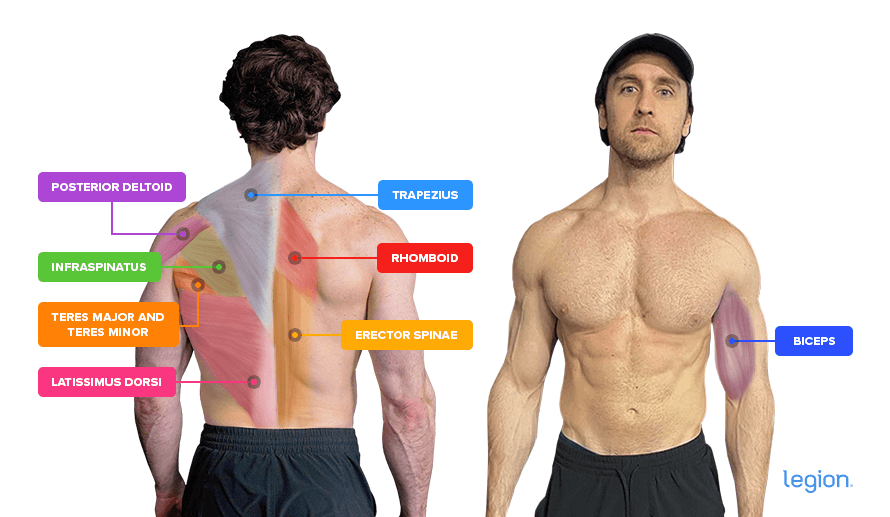
Pull-up vs. Chin-up: Which Is Better?
Neither exercise is better than the other—both train the same muscles to a similar degree.
Thus, the primary reasons to do one over the other are to keep your workouts interesting and avoid shoulder and elbow overuse injuries, which can occur when you do the same exercise for an extended period.
In other words, you can use chin-ups and pull-ups interchangeably in your training, though it’s best to alternate between them periodically.
A good way to do this is to include the pull-up in your program for 8-to-10 weeks of training, take a deload, then replace the pull-up with the chin-up for the following 8-to-10 weeks of training.
This is how I personally like to organize my training, and it’s similar to the method I advocate in my fitness books for men and women, Bigger Leaner Stronger and Thinner Leaner Stronger.
(Or if you aren’t sure if Bigger Leaner Stronger or Thinner Leaner Stronger is right for you or if another strength training program might be a better fit for your circumstances and goals, take Legion Strength Training Quiz, and in less than a minute, you’ll know the perfect strength training program for you. Click here to check it out.)
How to Do the Pull-up
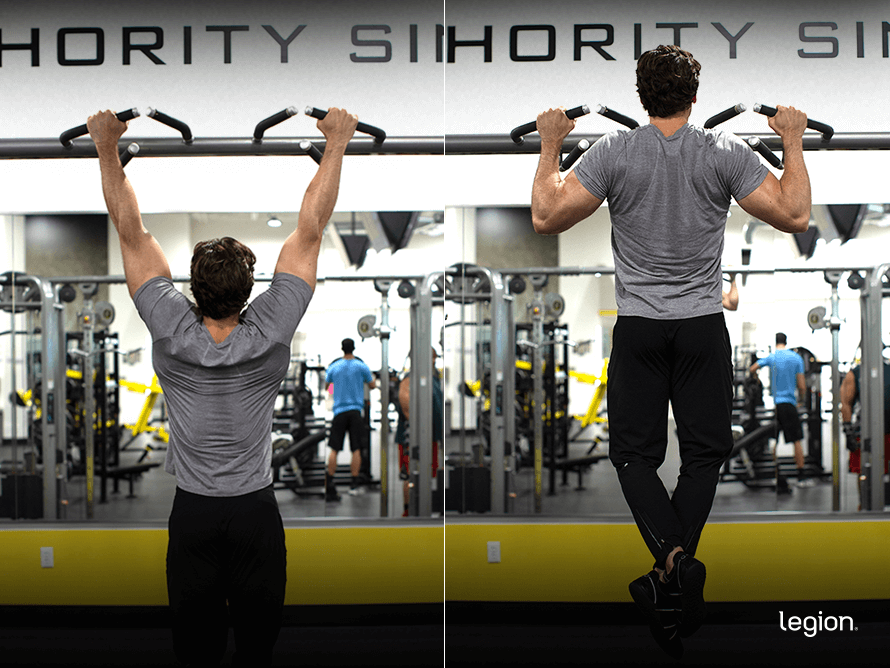
- Grab a pull-up bar slightly wider than shoulder-width apart with your palms facing away from you.
- Lift your feet so that you’re hanging with your arms straight. You can cross your feet over each other if you prefer.
- Without swinging your feet or knees, pull your body up until your chin is above the bar.
- Once your chin has passed the bar, lower yourself under control to the starting position. Keep lowering yourself until your arms are straight and you feel a deep stretch in your lats.
(Tip: A helpful cue is to imagine pulling your elbows into the floor.)
How to Do the Chin-up
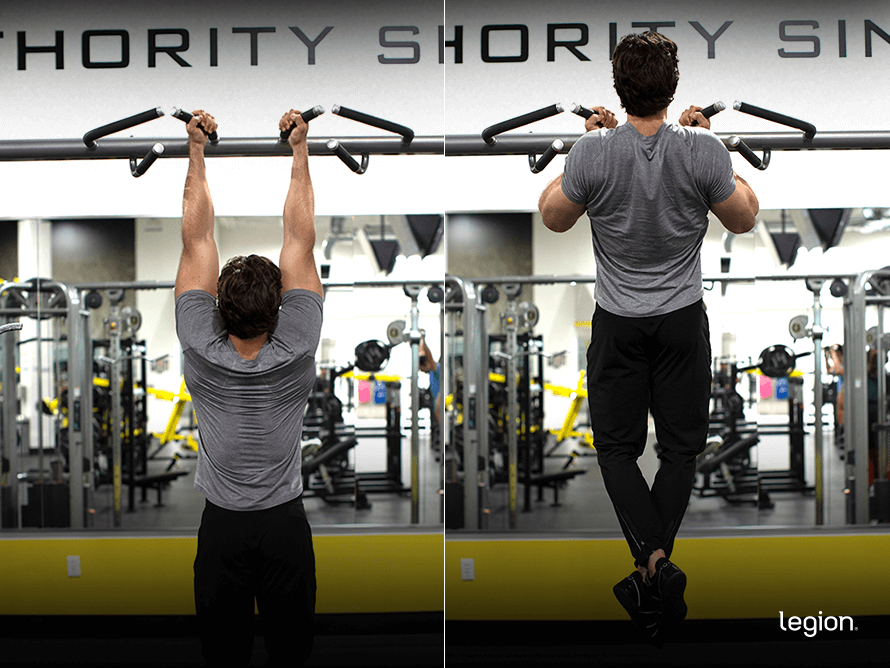
- Grab a pull-up bar with your hands around shoulder-width apart and your palms facing you.
- Lift your feet so that you’re hanging with your arms straight. You can cross your feet over each other if you prefer.
- Without swinging your feet or knees, pull your body up until your chin is above the bar.
- Once your chin has passed the bar, lower yourself under control to the starting position. Keep lowering yourself until your arms are straight and you feel a deep stretch in your lats.
The Best Pull-up and Chin-up Variations
1. Weighted Pull-up
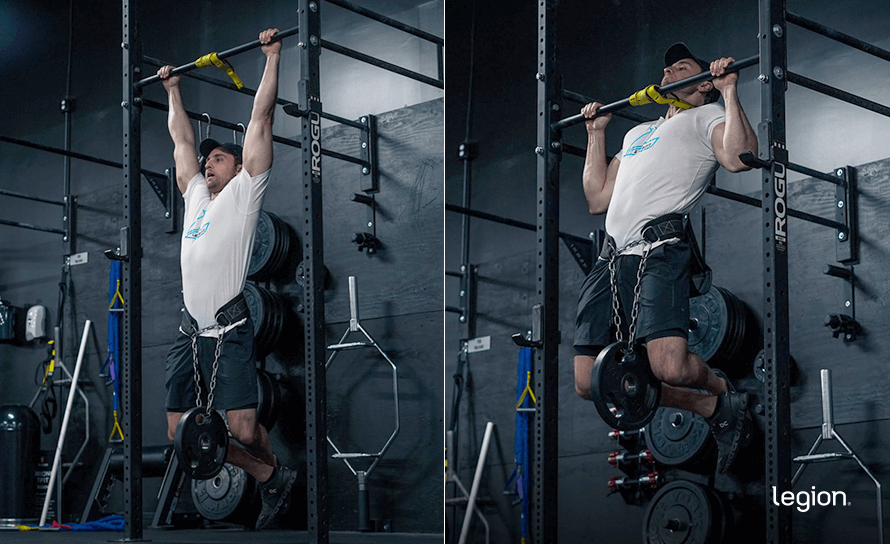
In the weighted pull-up, you snatch a dumbbell between your thighs or strap a weight around your waist. This allows you to progressively overload the exercise when the bodyweight version becomes too easy.
2. Weighted Chin-up
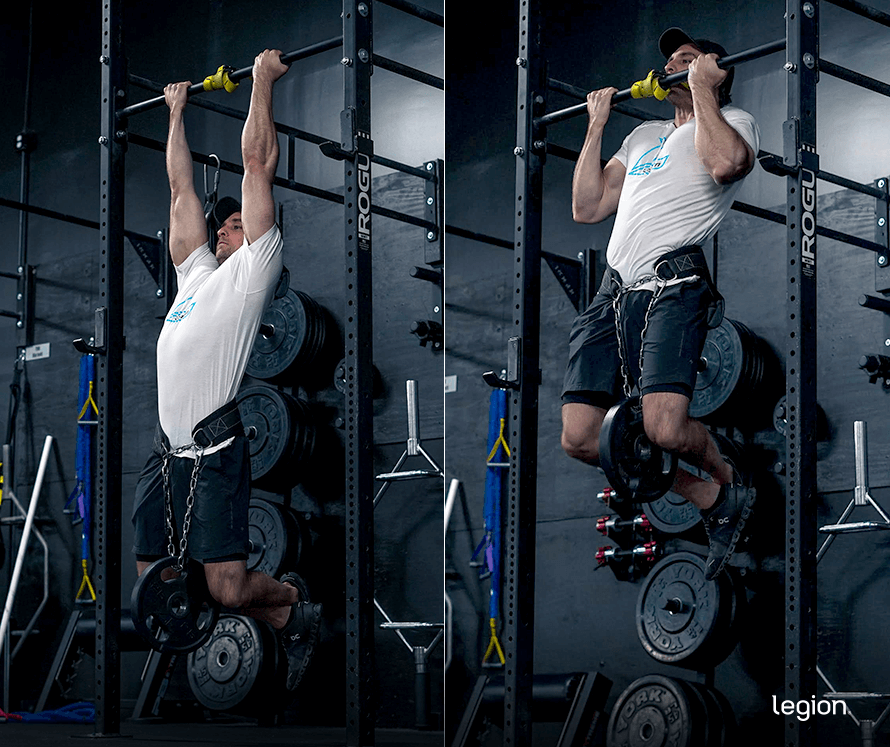
Similarly to the weighted pull-up, the weighted chin-up allows you to continue progressing when the bodyweight chin-up is no longer challenging.
3. Lat Pulldown
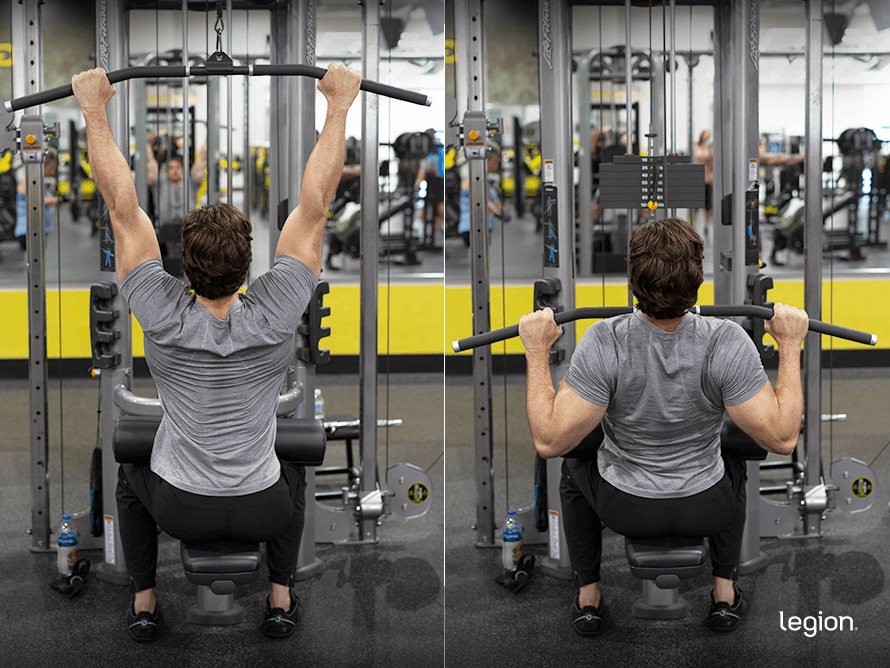
Like the pull-up and chin-up, the lat pulldown involves pulling “vertically” (parallel with your torso) and trains every muscle in your back, which is why research shows that it’s just as effective as the pull-up and chin-up for gaining muscle and strength.
4. Banded Lat Pulldown
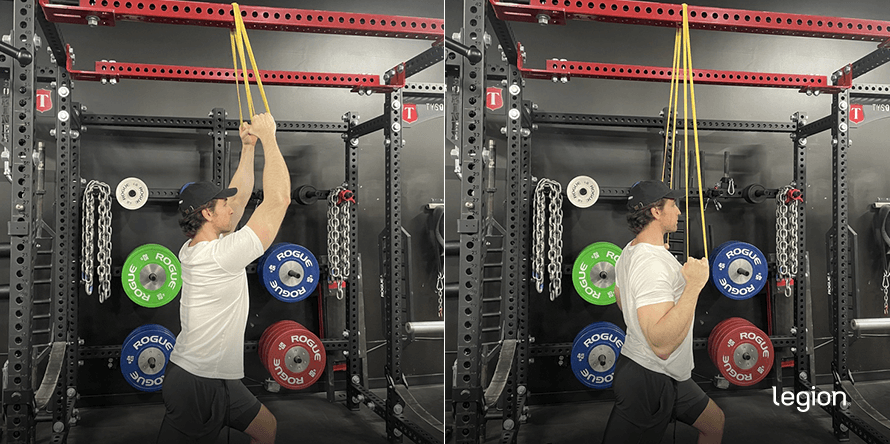
The banded lat pulldown is a good chin-up and pull-up variation if you’re very new to weightlifting, coming back from an injury and taking it easy, or if you’re traveling or training in a home gym and don’t have access to a pull-up bar or lat pulldown machine.
5. Eccentric Chin-up
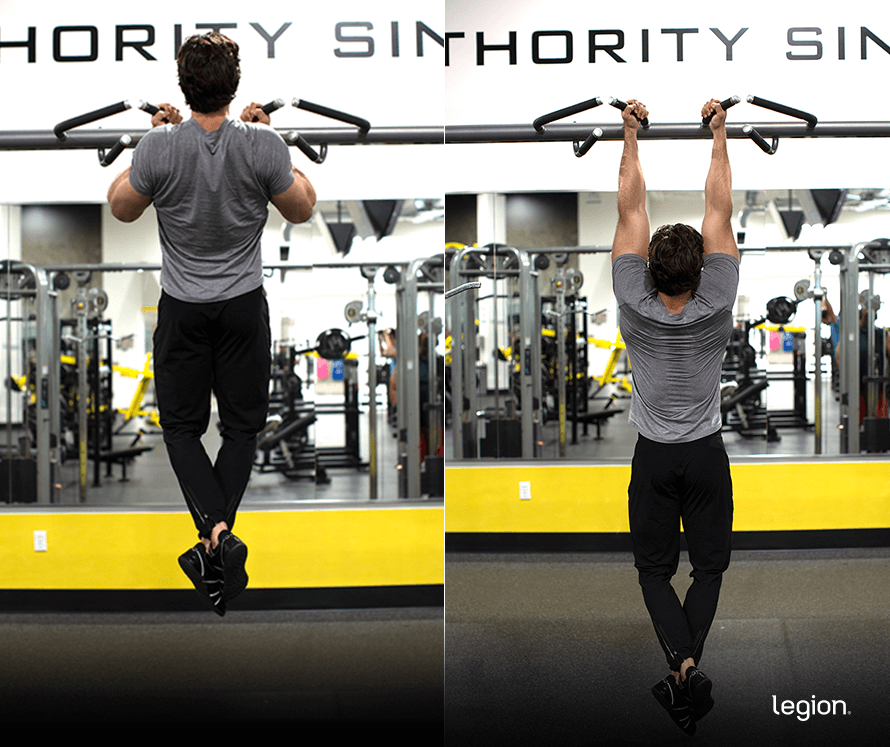
To perform the eccentric chin-up, get into the top position of the chin-up and slowly lower yourself to the bottom position, taking at least three seconds to reach the bottom of the rep.
Research shows that only doing the eccentric (lowering) portion of an exercise is superior to doing only the concentric (lifting) portion when it comes to gaining muscle and strength, which is why the eccentric chin-up is so effective at helping you progress toward doing a full bodyweight chin-up.
Scientific References +
- Dickie, J. A., Faulkner, J. A., Barnes, M. J., & Lark, S. D. (2017). Electromyographic analysis of muscle activation during pull-up variations. Journal of Electromyography and Kinesiology, 32, 30–36. https://doi.org/10.1016/J.JELEKIN.2016.11.004
- Youdas, J. W., Amundson, C. L., Cicero, K. S., Hahn, J. J., Harezlak, D. T., & Hollman, J. H. (2010). Surface electromyographic activation patterns and elbow joint motion during a pull-up, chin-up, or perfect-pullupTM rotational exercise. Journal of Strength and Conditioning Research, 24(12), 3404–3414. https://doi.org/10.1519/JSC.0B013E3181F1598C
- Ronai, P. (2019). The Lat Pulldown. ACSM’s Health and Fitness Journal, 23(2), 24–30. https://doi.org/10.1249/FIT.0000000000000469
- Doma, K., Deakin, G. B., & Ness, K. F. (2013). Kinematic and electromyographic comparisons between chin-ups and lat-pull down exercises. Sports Biomechanics, 12(3), 302–313. https://doi.org/10.1080/14763141.2012.760204
- Farthing, J. P., & Chilibeck, P. D. (2003). The effects of eccentric and concentric training at different velocities on muscle hypertrophy. European Journal of Applied Physiology, 89(6), 578–586. https://doi.org/10.1007/S00421-003-0842-2
- Friden, J., Seger, J., Sjostrom, M., & Ekblom, B. (1983). Adaptive response in human skeletal muscle subjected to prolonged eccentric training. International Journal of Sports Medicine, 4(3), 177–183. https://doi.org/10.1055/S-2008-1026031










